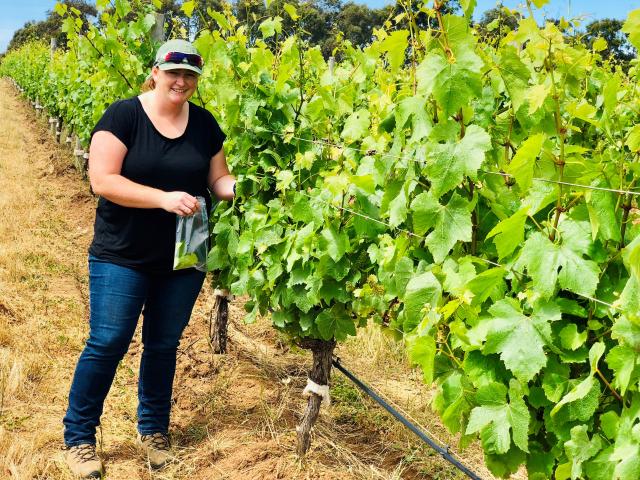Wine Australia Incubator Initiative – Gingin Chardonnay and Grapevine leafroll viruses
The most widely planted clone of Chardonnay in Western Australia (WA) is anecdotally thought to be the Gingin clone. This clone produces some of WA’s highest quality Chardonnay, despite the characteristic poor fruit set, millerandage and low yields. It is thought by many growers that these attributes are due to an interaction with one or more grapevine viruses, in particular Grapevine leafroll virus 1 (GLRV1).
Department of Primary Industry and Regional Development (DPIRD) Researcher Monica Kehoe, Brenda Coutts and Richard Fennessy were awarded an Incubator Project earlier this year from Wine Australia. The project will try to answer the question of whether viral infection of the Gingin Chardonnay clone can influence the vine phenotype, performance and wine quality.
Virus infection is not usually thought to be a good thing, but in this instance, it may be possible that it is contributing to the sought-after unique nature of high quality wines, particularly Western Australian Chardonnay. Understanding whether GLRV1 and/or other viruses are consistently present in Gingin clones, and how they affect vines and resulting wines will begin to answer many questions and provide a basis for further research into this phenomenon. There is not currently any record of such a study on a white variety. Most other studies looking at the effect of virus infection on vines report that the virus is detrimental to the vine, with decreased yields being one of the major problems.
There has been little research on the effect of virus infection on the quality of the wine produced from virus infected vines. There are few examples in the literature, and most focus on red varieties, which will often display more obvious symptoms of infection such as reddening and red blotches.
This small project will provide the first real evidence as to whether or not virus infection has any beneficial impact on the final wine produced, particularly with the Gingin Chardonnay clone. We expect to provoke valuable discussion on disease management practices, particularly if virus infection is found to be favourable to the wine quality in the Gingin Chardonnay clone. Purposefully maintaining a level of infection in a vineyard would require stringent management of vines and vectors to prevent spread to other blocks that may not be similarly affected.

